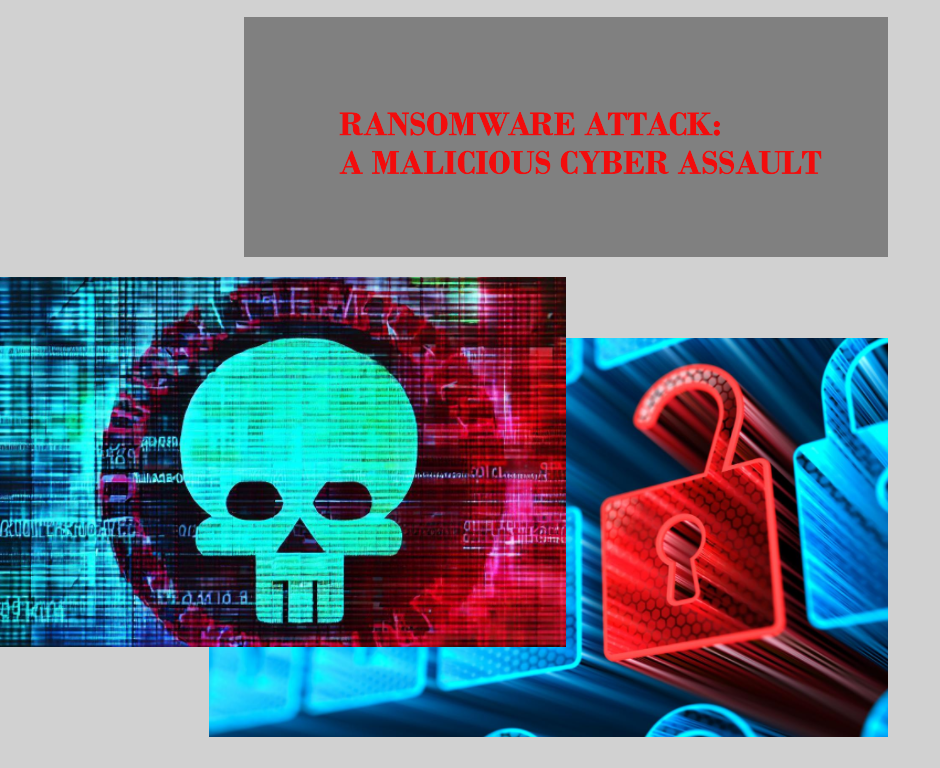Ransomware Attack
The silent thief that holds your data hostage
A ransomware attack is a malicious cyber assault that encrypts your files, demanding a ransom for their release, posing a serious threat to data security and privacy. Stay vigilant and back up your data to safeguard against this growing digital menace.

Ransomware Attacks on the Rise: Protecting Your Digital Assets
Ransomware attacks pose a substantial and alarming cybersecurity threat due to their increasing frequency and sophistication. These malicious attacks encrypt crucial files or restrict access to your systems, effectively holding them hostage until a ransom is paid. To effectively navigate this rapidly evolving threat landscape, it is imperative to understand the nature of these attacks and implement proactive measures to safeguard your digital assets.
What is Ransomware?
Ransomware is a type of malware that is specifically created to encrypt files on systems that have been infected with it. It can also restrict access to those files. To regain access, the attackers demand payment in the form of cryptocurrencies. Once paid, they may provide the decryption key or restore access to the affected data or systems.
The Impact of Ransomware Attacks:
Financial loss
Ransomware attacks can cause major financial losses for individuals, businesses, and organisations. The ransom demands can be quite high, and the expenses associated with recovering from such an attack, including system restoration and damage mitigation, can also be significant.
Disruption of Operations
Cyber-attacks involving ransomware can significantly disrupt regular business operations, leading to downtime and decreased productivity. This can result in prolonged periods of inactivity, which can cause financial losses and harm a company’s reputation.
Data Loss and Privacy Breach
Sometimes, cyber attackers resort to blackmail by threatening to expose sensitive information unless a ransom is paid. This threatens individuals and organisations with data breaches, privacy violations, and even legal liabilities.
Protecting Against Ransomware Attacks:
Backup your data
Regularly backing up your important files and storing them offline or in a secure location is crucial. This ensures that you can restore your data without being forced to pay a ransom in case of a ransomware attack.
Exercise caution with email and web links
Be careful opening email attachments or clicking suspicious links, as ransomware attacks can start with phishing emails or harmful websites.
Implement the principle of least privilege (PoLP)
To prevent the spread of ransomware in case of an infection, it is advisable to restrict user permissions and access rights to the bare minimum required for job functions.
Educate yourself and your employees
Prioritise cybersecurity awareness training to avoid ransomware attacks. Familiarise yourself with phishing tactics and know how to handle suspicious emails and links to protect your data.
Use robust security software
Install and update antivirus software to prevent ransomware attacks.
Enable firewall and spam filters
For the safety of your device, it is recommended to enable firewalls and apply spam filters to shield your system from harmful email attachments or links.
Develop an incident response plan
A ransomware attack response plan is vital, including isolating systems, informing authorities, and seeking help from cybersecurity experts.
Keep your systems updated
Update software regularly to prevent ransomware attacks. Cybercriminals exploit outdated software vulnerabilities, so staying current is vital for reducing known risks.
